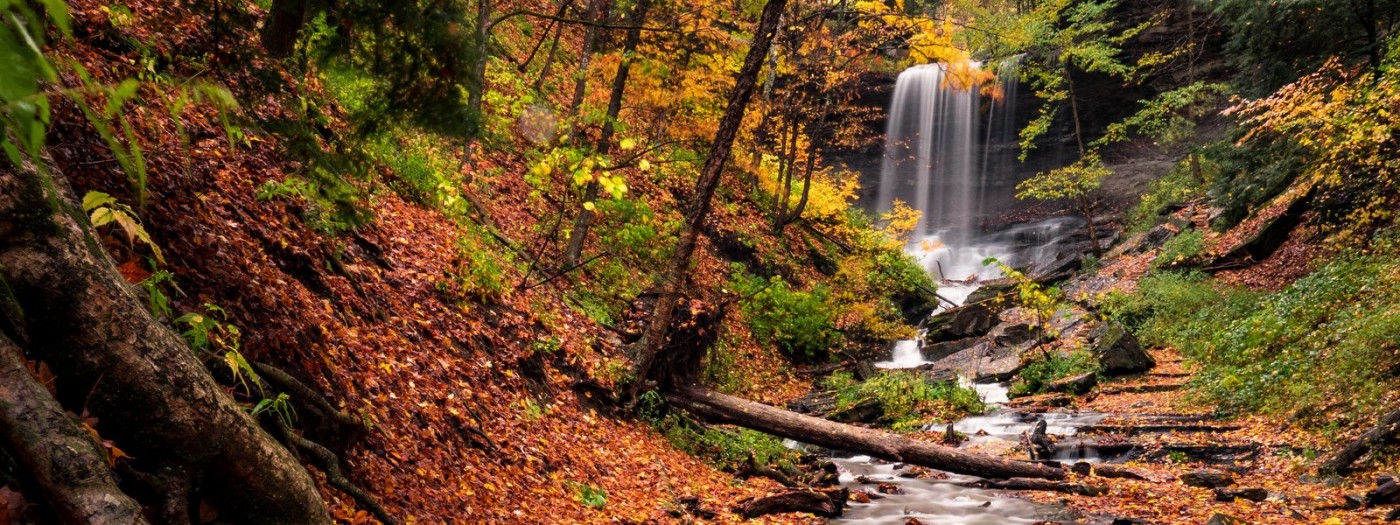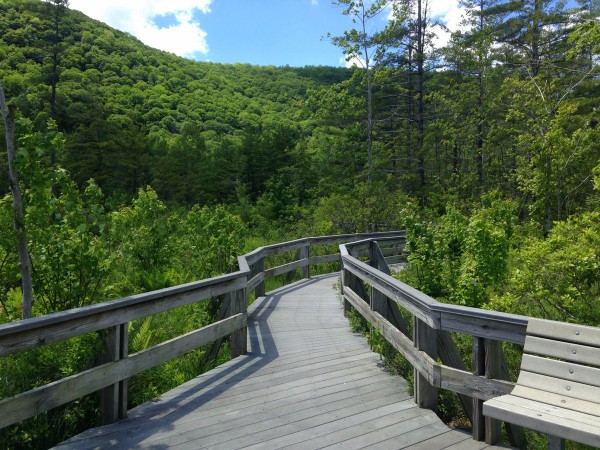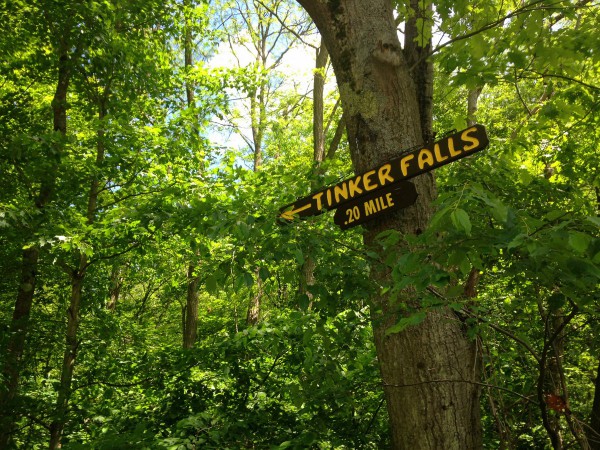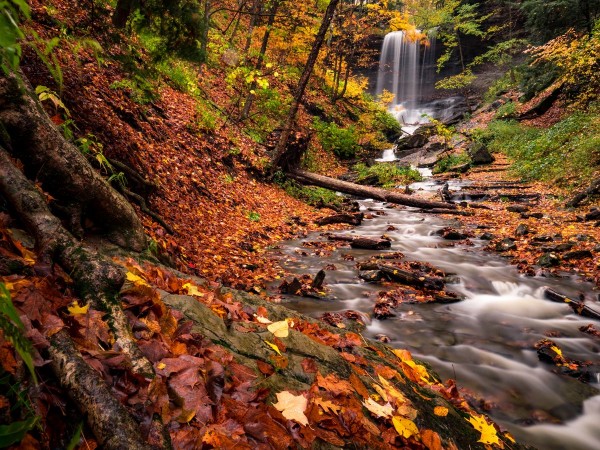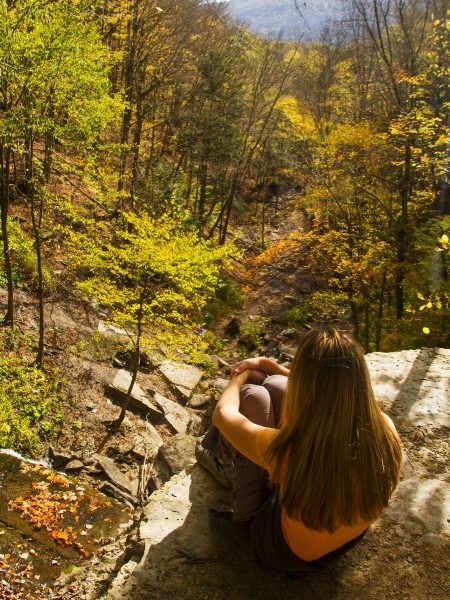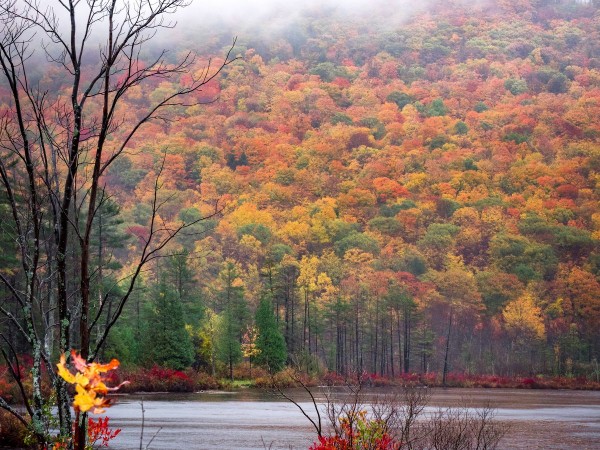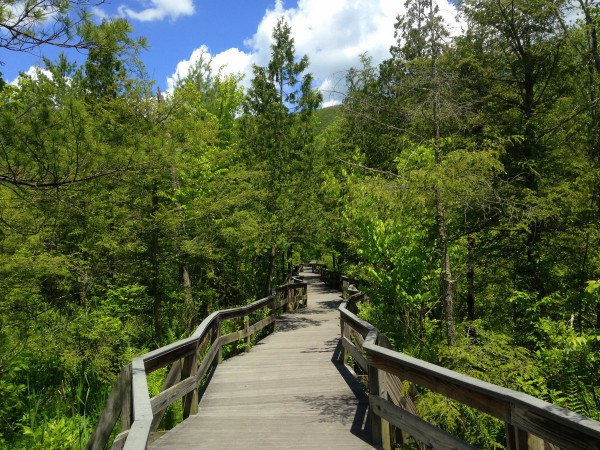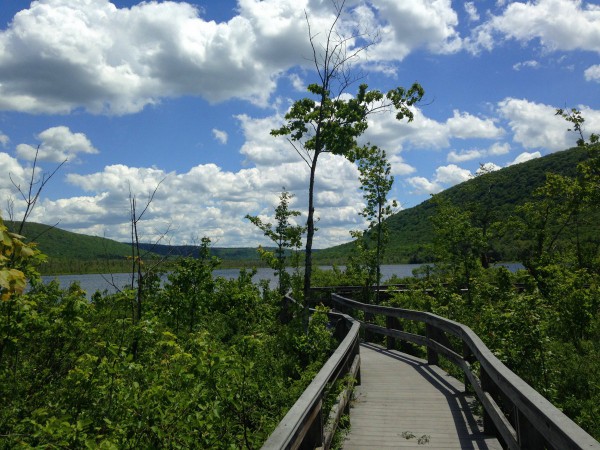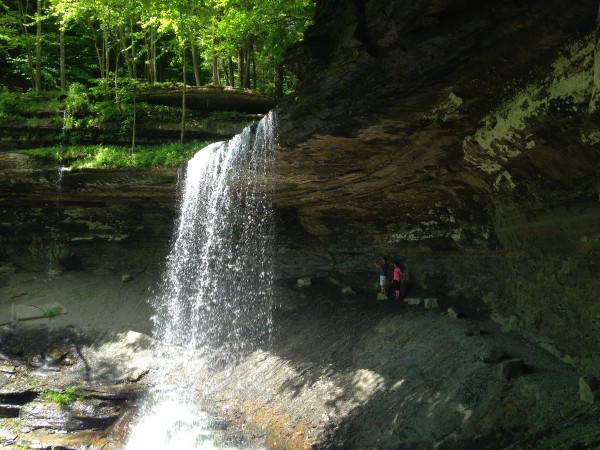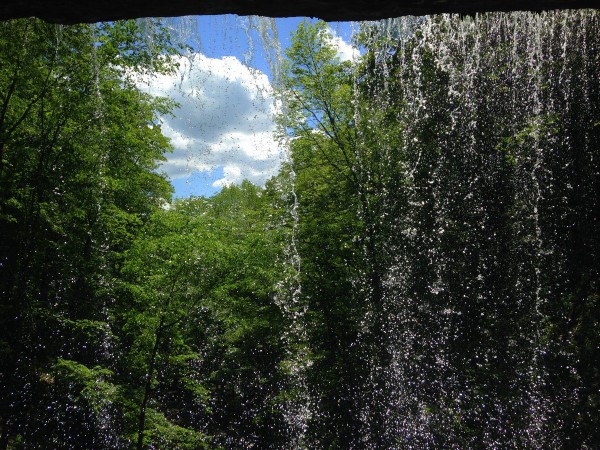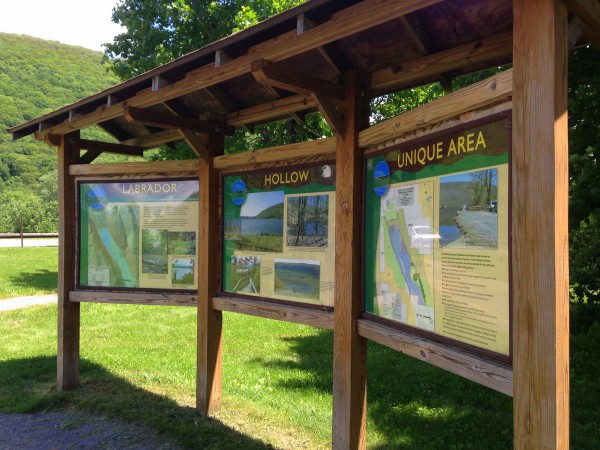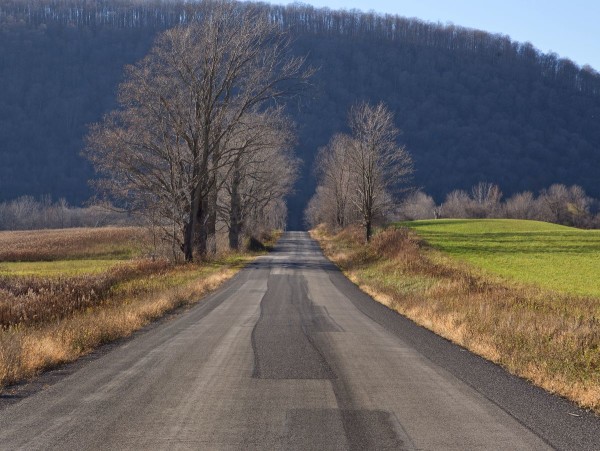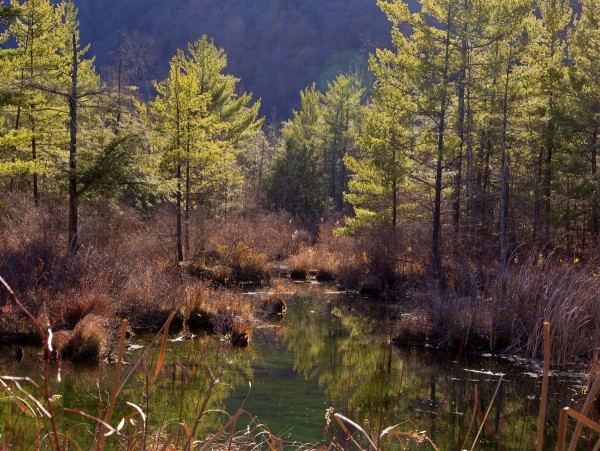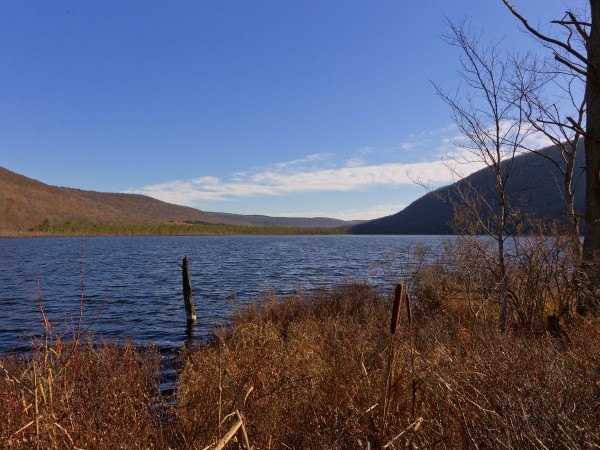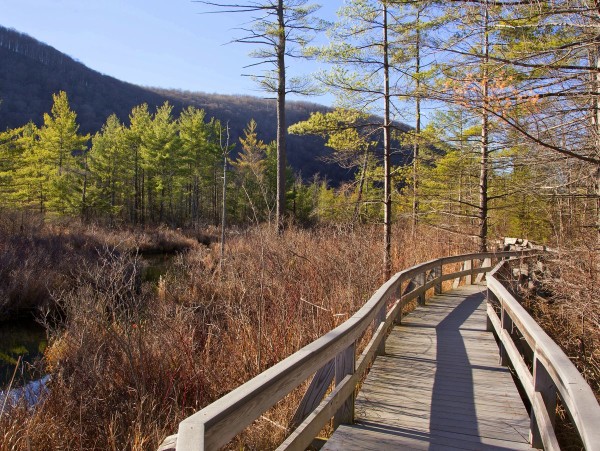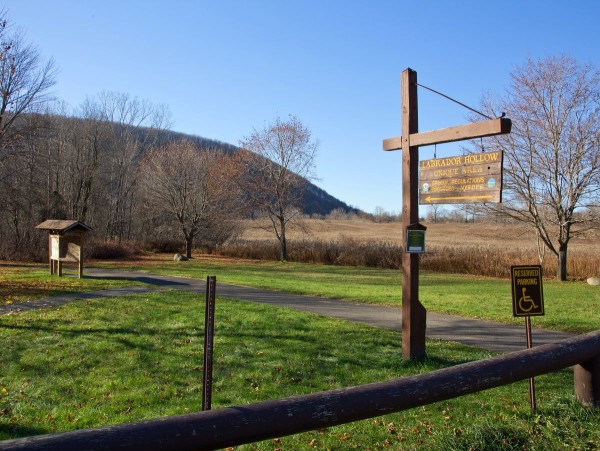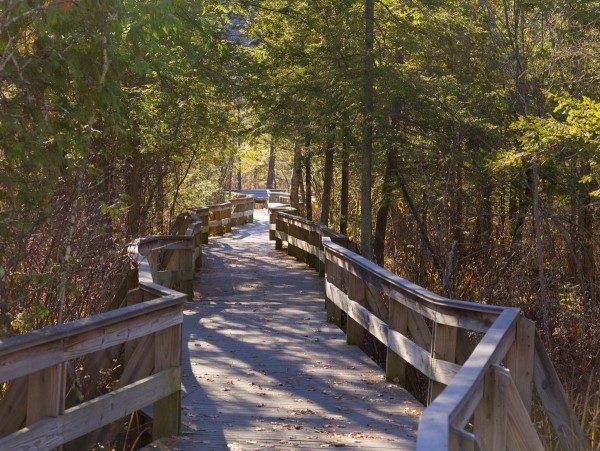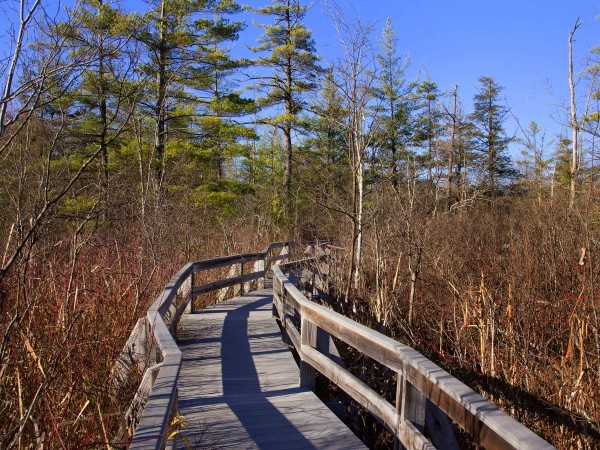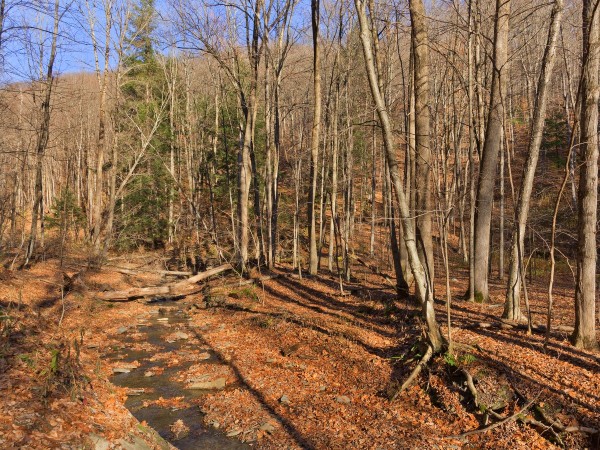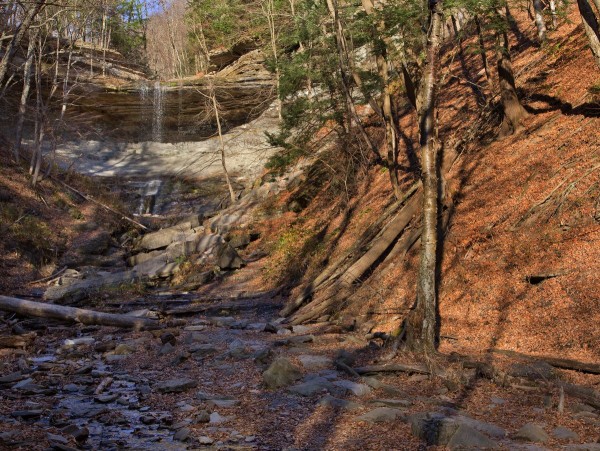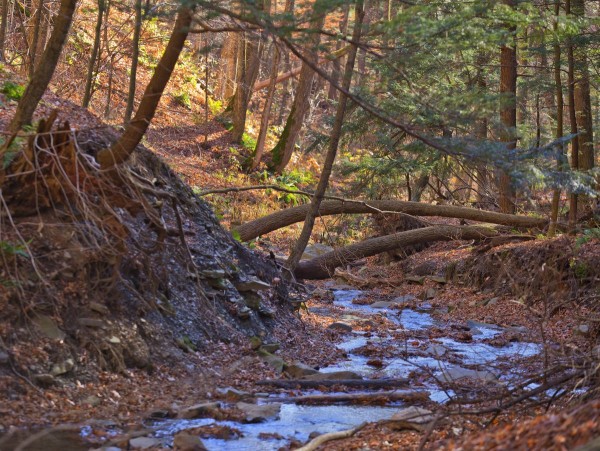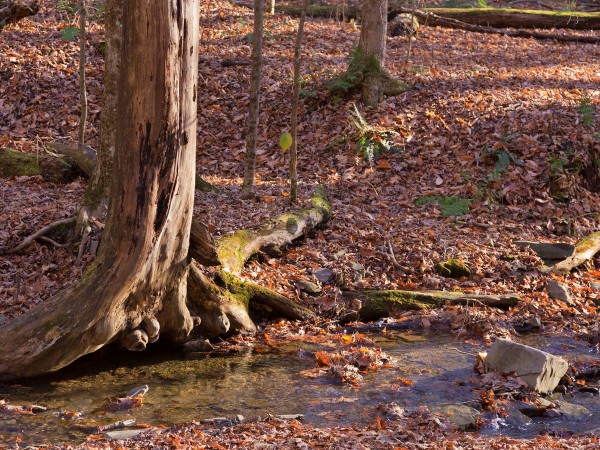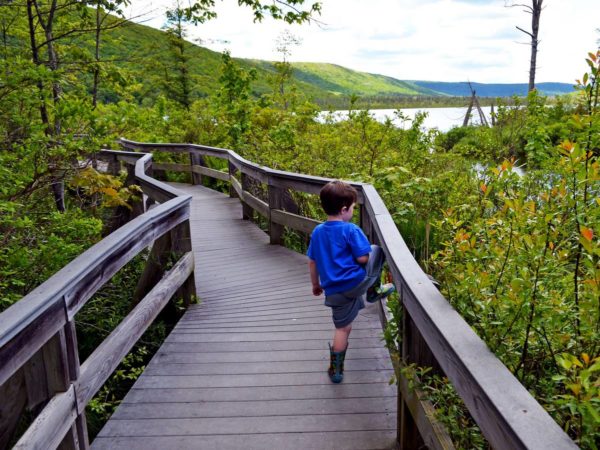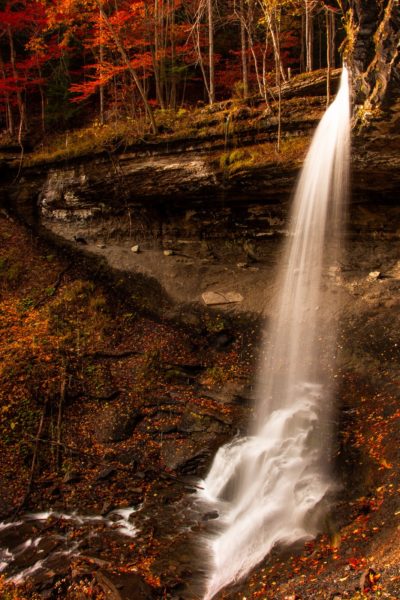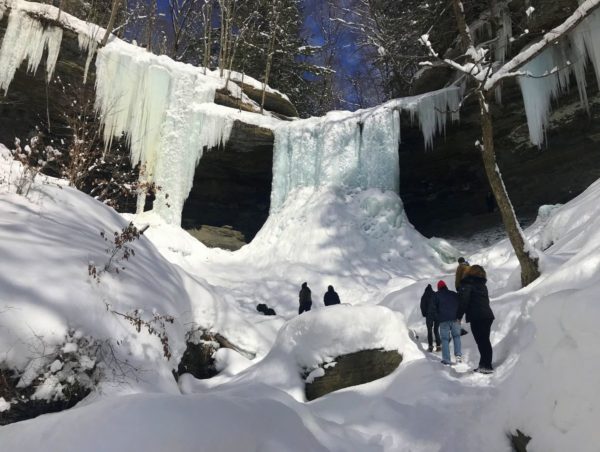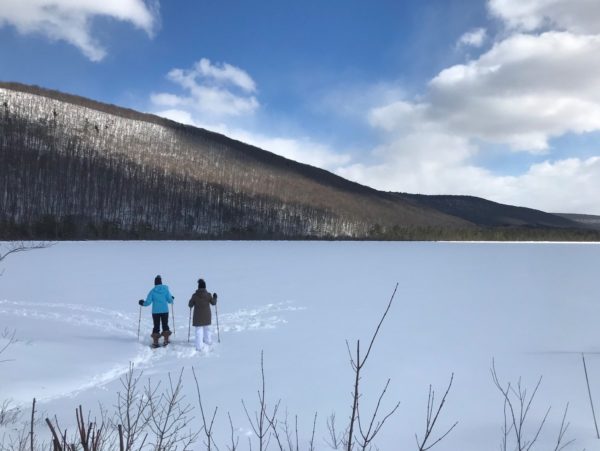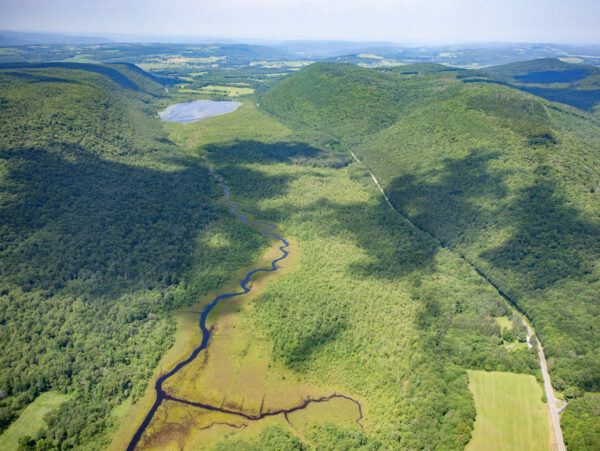The most popular destination in Labrador Hollow is the universally accessible, quarter-mile path to Tinker Falls. Tinker Falls is a stunning example of a “hanging” falls. Its origin dates back to when New York and much of the North American continent was part of an inland sea. As ancient mountains slowly eroded away, layers of sediment accumulated in the sea. The particulate carried into the sea often segregated based on weight according to distance and depth. Heavier particles, like sand, settled out in shallow sea waters while lighter silt settled in deeper waters. The sand, under the ever-increasing pressure from the layers above, eventually transformed into sandstone, while silt transformed into siltstone or shale.
Since sea depth fluctuated over the eons, layers of sandstone and shale would often intermix. Millennia later, as these layers from the ancient sea bed were uplifted and again exposed to the surface, the disparity between sandstone and shale’s erodibility unfolded into a dramatic topographic feature. Streams would erode the landscape down to the more resistant layers of sandstone, termed a capstone. But where the persistent water eventually broke through, it dug more easily through the layers of shale beneath. This discrepancy is one of the factors that created the region’s notable gorges and waterfalls.
Over time, the crumbly shale beneath the crest of the waterfall and behind it would wash away leaving an undercut capstone, a deep crevice behind, and an impressive waterfall. There are few waterfalls that so effectively display this unique process as Tinker Falls. (Another impressive example is Carpenter Falls above the Finger Lakes Land Trust’s Bahar Preserve). The cavern behind the falls is 100 feet wide, 30 feet deep, and 30 feet high. Walking behind it is possible if you are brave and agile enough to climb the steep, unstable, crumbly shale that surrounds it.
Second in popularity, and perhaps also in scenery, is the climb to the Jones Hill hang glider launch. From this vantage point, you can look down upon the hollow and Labrador Pond, at one of the few truly scenic hilltop vistas available along trails in the Finger Lakes region.
The hollow between Labrador Hill and Jones Hill is so narrow, less than a half-mile, and has such steep hillsides that it lies in shade most of the day. The result is that the hollow has its own microclimate. This microclimate is considerably colder than the surrounding landscape and its ecological niche more closely resembles a high mountain Adirondacks bog than of wetlands found elsewhere in the region. As such, a variety of unique plants inhabit the wetland and small pond. The hollow and wetlands can be explored along universally accessible boardwalks, which also include an accessible fishing pier. Quiet water paddlers who wish to explore Labrador Pond can do so from a car-top boat launch about midway down the western shore along Markham Hollow Road.
Labrador Hollow is designated as a Unique Area. Though similar to state forests, fewer activities are permitted here than in state forests. One restriction of note for backpackers is that camping is not allowed in the unique area but is allowed in adjoining Morgan Hill State Forest.

